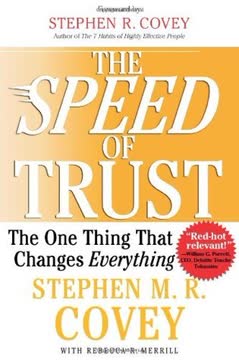Key Takeaways
1. Visual storytelling is the new frontier of content marketing
"In the age of infobesity, there are several ways to stand out from the noise and draw attention to your content in an organic way. And visual storytelling is one of them."
Attention economy: In today's digital landscape, consumers are bombarded with information, leading to shrinking attention spans and increased competition for engagement. Visual storytelling has emerged as a powerful tool to cut through the clutter and capture audience attention.
Emotional connection: Visual content has the unique ability to evoke emotions and create lasting impressions. By crafting compelling visual narratives, brands can forge deeper connections with their audience, enhancing brand loyalty and driving action.
Content evolution: The shift towards visual storytelling reflects broader changes in content consumption habits:
- Rise of image-centric platforms (Instagram, Pinterest)
- Increased mobile usage
- Growing preference for snackable, easily digestible content
2. Images are processed 60,000 times faster than text by the human brain
"90% of information transmitted to the brain is visual, and visuals are processed in the brain 60,000 times faster than text."
Cognitive efficiency: The human brain is wired to process visual information more quickly and efficiently than text. This biological predisposition makes visual content a highly effective medium for communicating complex ideas and evoking emotional responses.
Memory retention: Visual content is not only processed faster but also retained longer in memory. Studies have shown that people remember:
- 10% of what they hear
- 20% of what they read
- 80% of what they see and do
Evolutionary advantage: Our ability to quickly process visual information stems from evolutionary adaptation. This innate skill can be leveraged by marketers to create more impactful and memorable content that resonates with audiences on a fundamental level.
3. Different types of visual content serve unique purposes in storytelling
"From images to videos, infographics, and presentations, the popularity and unprecedented usage of visuals have resulted in a social media era that rewards creativity."
Diverse visual formats: Each type of visual content offers unique storytelling opportunities:
- Images: Capture attention and convey emotions
- Videos: Demonstrate products and tell complex stories
- Infographics: Simplify data and explain processes
- Presentations: Educate and engage audiences
- Memes: Inject humor and relatability
- GIFs: Add movement and personality
Strategic selection: Choosing the right visual format depends on:
- Message complexity
- Target audience preferences
- Platform constraints
- Brand personality
- Content goals (e.g., awareness, education, conversion)
Creative experimentation: Successful visual storytellers continually explore new formats and combinations to keep their content fresh and engaging. This may involve repurposing content across different visual mediums or creating hybrid formats that blend multiple visual elements.
4. Social media platforms offer diverse opportunities for visual engagement
"Each network has its own character and audience. To get the most out of your social media channels, you need to create strong content—and then use it to start a conversation that is appropriate to that network."
Platform-specific strategies: Effective visual storytelling requires tailoring content to each platform's unique characteristics:
- Facebook: Emphasis on community and shareability
- Instagram: High-quality visuals and authenticity
- Pinterest: Inspiration and discoverability
- Twitter: Real-time engagement and brevity
- LinkedIn: Professional context and thought leadership
Audience alignment: Different platforms attract distinct user demographics and behaviors. Brands must align their visual content with the expectations and preferences of each platform's audience to maximize engagement and reach.
Cross-platform synergy: While content should be tailored to each platform, maintaining a cohesive visual identity across channels is crucial for brand recognition and consistency. This requires a balanced approach that adapts content while preserving core brand elements.
5. A strategic roadmap is essential for effective visual storytelling
"In order to develop and implement a successful visual storytelling strategy, marketers must focus on the following elements: Design, Personalization, Usefulness, Personality, Storytelling, Shareworthiness, Real-time amplification"
Goal alignment: A visual storytelling roadmap should be closely aligned with overarching business objectives, such as:
- Brand awareness
- Customer engagement
- Lead generation
- Sales conversion
- Customer retention
Content planning: Developing a robust content calendar ensures consistent, high-quality visual storytelling:
- Identify key themes and messages
- Plan for seasonal and event-based content
- Balance promotional and value-added content
- Incorporate user-generated content opportunities
Resource allocation: A strategic roadmap helps organizations allocate resources effectively:
- Identify necessary tools and technologies
- Determine staffing requirements
- Establish workflows and approval processes
- Set budgets for content creation and promotion
6. User-generated content amplifies brand authenticity and reach
"By making consumers part of the visual storytelling process, companies are participating in collaborative storytelling while sourcing incredible imagery."
Authentic voices: User-generated content (UGC) provides authentic, relatable perspectives that resonate with audiences more effectively than polished brand messaging. This authenticity builds trust and credibility with potential customers.
Community building: Encouraging UGC fosters a sense of community around a brand, increasing loyalty and advocacy. Strategies for promoting UGC include:
- Contests and challenges
- Branded hashtags
- Feature customer stories
- Incentives for sharing experiences
Cost-effective content: UGC can significantly expand a brand's content library without the high costs associated with professional production. This allows for more frequent posting and a diverse range of visual assets.
7. Real-time marketing requires preparation and agility
"Relevancy has a deadline—but real-time marketing takes preparation."
Cultural relevance: Real-time marketing allows brands to tap into current events, trends, and conversations, demonstrating cultural awareness and relevance. This approach can significantly boost engagement and brand perception.
Preparedness is key: Successful real-time marketing requires:
- Established approval processes
- Pre-approved content templates
- Cross-functional teams ready to act
- Robust social listening tools
- Clear brand voice and guidelines
Balance spontaneity and strategy: While real-time marketing thrives on quick reactions, it should still align with overall brand strategy and messaging. The most effective real-time content feels spontaneous but reinforces core brand values and objectives.
8. Measurement and analytics drive continuous improvement in visual storytelling
"Use the tools and recommendations provided earlier in this chapter as a start, but consider personalizing them to what your senior leadership is asking about."
Key performance indicators: Establish relevant KPIs to measure the success of visual storytelling efforts:
- Engagement rates (likes, comments, shares)
- Reach and impressions
- Click-through rates
- Conversion metrics
- Brand sentiment
Data-driven optimization: Regularly analyze performance data to refine visual storytelling strategies:
- Identify top-performing content types
- Optimize posting times and frequencies
- Adjust content themes based on audience response
- Test different visual formats and styles
Holistic evaluation: Consider both quantitative and qualitative metrics when assessing visual storytelling effectiveness. This may include:
- Audience feedback and sentiment
- Impact on brand perception
- Influence on customer journey
- Contribution to overall marketing goals
Last updated:
FAQ
What's The Power of Visual Storytelling about?
- Focus on Visual Marketing: The book emphasizes the critical role of visual storytelling in marketing, showcasing how images, videos, and infographics can significantly boost engagement and customer relationships.
- Strategies and Tools: It offers practical strategies and tools for implementing visual storytelling across various social media platforms, making it highly relevant for modern marketers.
- Real-World Examples: Authors Ekaterina Walter and Jessica Gioglio provide numerous case studies from successful brands to demonstrate the effectiveness of visual storytelling.
Why should I read The Power of Visual Storytelling?
- Essential for Marketers: As visual content becomes more dominant, this book is a crucial guide for marketers aiming to adapt and excel in the digital age.
- Comprehensive Resource: It provides a thorough overview of visual storytelling, from its significance to practical implementation, valuable for both beginners and experienced marketers.
- Expert Insights: Written by recognized experts, the book offers insights drawn from extensive experience in social media and visual marketing.
What are the key takeaways of The Power of Visual Storytelling?
- Visuals Drive Engagement: Posts with images receive significantly more engagement than text-only posts, with statistics showing a 120-180% increase in engagement for visual content.
- Emotional Connection: Visual storytelling helps brands create emotional connections with their audience, enhancing loyalty and brand perception.
- Platform-Specific Strategies: The book outlines tailored strategies for different social media platforms, ensuring effective audience engagement.
What are the best quotes from The Power of Visual Storytelling and what do they mean?
- “If a picture is worth a thousand words, The Power of Visual Storytelling is worth a million.”: This underscores the immense value of visual content in communication, suggesting that visuals can convey complex messages more powerfully than text.
- “Online business success is largely driven by pictures, not words.”: Highlights the shift towards visual content, indicating that brands must adapt to succeed in the digital marketplace.
- “Visual storytelling is essential in today’s crowded world.”: Emphasizes the necessity of using visuals to stand out in a saturated market.
How does The Power of Visual Storytelling define visual storytelling?
- Definition: Visual storytelling is the use of images, videos, infographics, and other visuals on social media to craft a graphical story around key brand values.
- Purpose: The goal is to create a coherent narrative that resonates with the audience, enhancing their understanding and emotional connection to the brand.
- Components: It combines creativity with strategic messaging, ensuring visuals align with the brand's identity and objectives.
How can I develop a visual storytelling road map as suggested in The Power of Visual Storytelling?
- Identify Goals: Start by defining your marketing goals and understanding your audience's needs and preferences.
- Choose Platforms: Select social media platforms that best align with your target audience and where visual content thrives.
- Create a Content Calendar: Develop a content calendar outlining what visuals to create and when to post them for a consistent approach.
What types of visual content are discussed in The Power of Visual Storytelling?
- Images and Photography: High-quality images and photography are crucial for capturing attention and conveying messages effectively.
- Videos and GIFs: The book highlights the growing popularity of video content, including short clips and GIFs, as powerful storytelling tools.
- Infographics and Presentations: Infographics communicate complex data visually, while presentations serve as engaging storytelling formats.
What are some tactics for effective visual marketing mentioned in The Power of Visual Storytelling?
- User-Generated Content: Encouraging customers to share their own images and experiences enhances authenticity and engagement.
- Real-Time Marketing: Leveraging current events and trends to create timely visual content can capture audience attention.
- Cross-Platform Consistency: Maintaining a consistent visual identity across platforms reinforces brand recognition and loyalty.
How does The Power of Visual Storytelling suggest measuring the success of visual content?
- Engagement Metrics: Track likes, shares, comments, and overall engagement rates to assess content resonance.
- Traffic Analysis: Use analytics tools to measure referral traffic from visual content to your website.
- Audience Feedback: Collect qualitative feedback through surveys or comments to gain insights into audience perceptions.
What challenges does The Power of Visual Storytelling identify in implementing visual storytelling?
- Content Overload: Standing out amidst the noise of competing content can be challenging for brands.
- Resource Constraints: Smaller businesses may struggle with limited budgets and resources for creating high-quality visual content.
- Adapting to Trends: Keeping up with rapidly changing social media trends requires ongoing effort and flexibility.
What role does real-time marketing play in visual storytelling according to The Power of Visual Storytelling?
- Timeliness and Relevance: Real-time marketing allows brands to respond quickly to current events and trends, enhancing engagement.
- Agility in Strategy: Brands must be agile and prepared to adapt their strategies to capitalize on opportunities.
- Creative Responses: Encourages creativity in responding to cultural moments, with examples of successful brand integrations.
What tools and resources does The Power of Visual Storytelling recommend for creating visual content?
- Design Tools: Tools like Canva and Piktochart simplify the design process for creating infographics and visuals.
- Analytics Tools: Google Analytics and social media insights help track performance and refine strategies.
- Content Curation Platforms: Platforms like FeedMagnet and Olapic assist in sourcing and curating user-generated content.
Review Summary
The Power of Visual Storytelling receives mixed reviews, with an average rating of 3.68 out of 5. Readers appreciate its insights on using visuals in social media marketing, finding it useful for both beginners and professionals. Many praise the practical tips and case studies provided. However, some criticize the book for being outdated, redundant, or lacking depth in certain areas. Several reviewers note that while the content is informative, the rapidly changing nature of social media may impact its long-term relevance.
Similar Books










Download PDF
Download EPUB
.epub digital book format is ideal for reading ebooks on phones, tablets, and e-readers.





